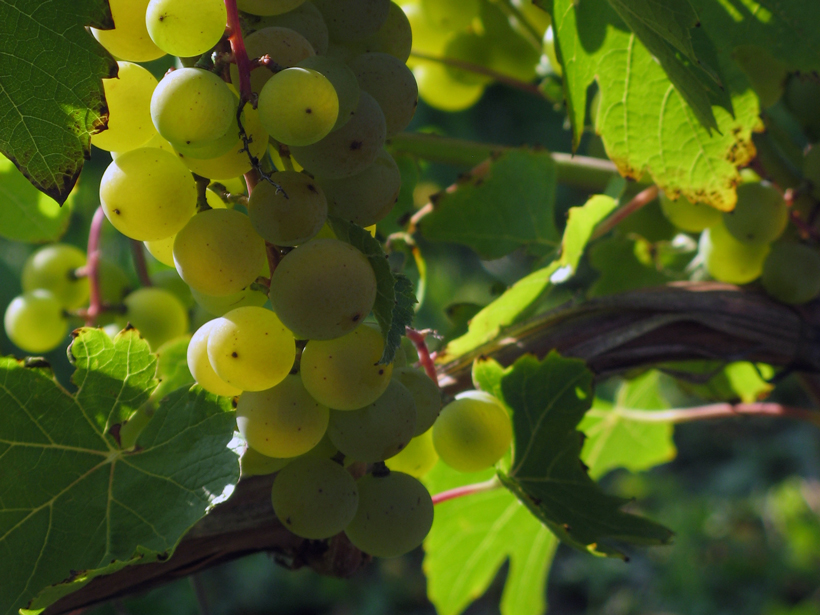Wine lovers of the world, prepare: Quebec, Canada, may soon be the newest destination for winery tours.
Although Quebec already hosts a successful—albeit fledgling—wine industry, its bitterly cold winters limit the current grape-growing potential to cold-hardy varieties such as Vidal and Seyval, which are less known than their popular European counterparts like Pinot Noir and Chardonnay.
Some aspects of climate change might herald good news for Quebec’s wine industry.
Thus, some aspects of climate change—notably the warmer temperatures it promises—might herald good news for Quebec’s wine industry. In a press conference presented at the 2015 Joint Assembly, a meeting of U.S. and Canadian geoscientist organizations in Montreal, Quebec, climate researchers explained that the province’s cold weather and snow, which can damage grapes’ blooming buds or kill the vine outright, may be countered by longer, warmer growing seasons.
“With this study we can look at where the next region of wine making could be located,” said Philippe Roy, lead researcher and climate scenarios specialist at the Ouranos Consortium on Regional Climatology and Adaptation to Climate Change.
The Climate Models Speak
Roy and his colleagues framed their investigation within two of the many factors that lead to a successful harvest: the number of consecutive days without frost and the number of growing degree days (GDDs). The latter tells vintners how many days of the growing cycle reach temperatures conducive for good wine and can fluctuate depending on region and grape variety.

The researchers used climate models to simulate how Quebec’s climate would change under two greenhouse gas emission scenarios designed by the Intergovernmental Panel on Climate Change. The first is the “business as usual” scenario, in which greenhouse gas emissions do not decrease in the 21st century. The second is a scenario in which greenhouse gas emissions peak in 2040 then decline.
Within these scenarios, the researchers searched for areas in climate predictions that gave 180 consecutive days without frost, which is the minimum for European varieties such as Pinot Noir, and 900 GDDs, which is also a bare minimum for grape growers. Then they examined what wine-growing conditions would be like in the coming century within Quebec. They found that by 2050, favorable grape-growing conditions are 70%–90% likely to emerge in the province.
Next, the researchers focused on the region in southern Quebec called Estrie, which borders northern Vermont. By plugging in the required 180 consecutive days without frost and 1250 GDDs needed for European grape varieties, the researchers found a 70% chance of suitable grape-growing conditions emerging by 2050.
“In terms of climate conditions, we can expect increased wine making potential.”
Bottom line: “In terms of climate conditions, we can expect increased wine-making potential” in the southern regions of Quebec, Roy said at the press conference. These regions may be able to grow more varieties of grapes, such as Merlot, Pinot Noir, and Chardonnay, which could make these future wineries’ products more desirable to consumers, Roy told Eos.
Two Sides of the Same Coin
Although Quebec and other parts of Canada might get a friendlier growing season, vineyards in other parts of the world may not fare as well under a changing climate. Past research has shown that under a business as usual greenhouse gas emissions scenario, places like Australia, Italy, Spain, France, and South Africa would see a sharp decrease in grape-growing productivity—anywhere from 25% to 73%, depending on the region. Some wineries are already moving their production toward the poles, where the heat can be less unrelenting.
Warmer weather may also affect the taste and alcohol content of wine because temperature-induced chemical processes that occur within growing grapes could make them less desirable to consumers.
Although the wine industries in southern Quebec may see a boost, changing climates are already altering other agricultural industries in the province. For example, warmer temperatures have started to threaten maple syrup harvests in southern regions as production creeps northward, toward cooler temperatures.
Hopes for a Growing Industry
“The wine making in Quebec is still at an early stage, but things are looking good on the climate side of the next decades,” Roy said.
However, climate change does not just mean warmer weather. It can also influence soil health, the spread of pathogens, and invasive species, said Isabelle Charron, a climate scenarios specialist at Ouranos.
“There are other factors that also have to be considered when you are going to decide whether wine making is going to be possible,” Charron said.
—JoAnna Wendel, Staff Writer
Citation: Wendel, J. (2015), Warmer climate could aid Quebec’s wine industry, Eos, 96, doi:10.1029/2015EO029461. Published on 7 May 2015.
Text © 2015. The authors. CC BY-NC 3.0
Except where otherwise noted, images are subject to copyright. Any reuse without express permission from the copyright owner is prohibited.

